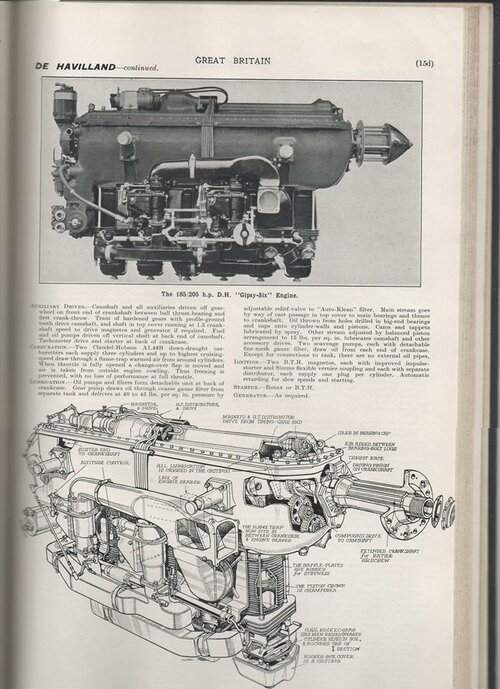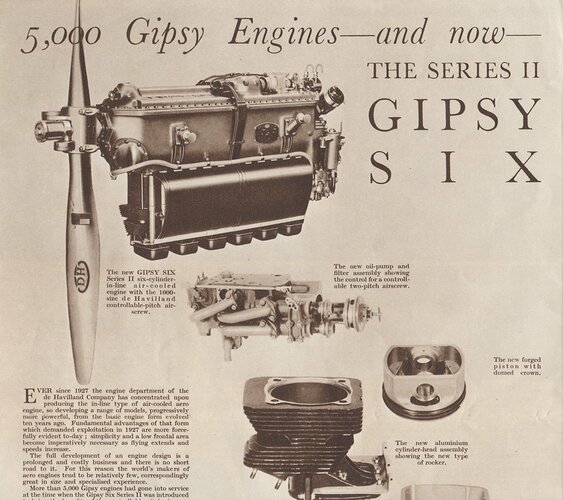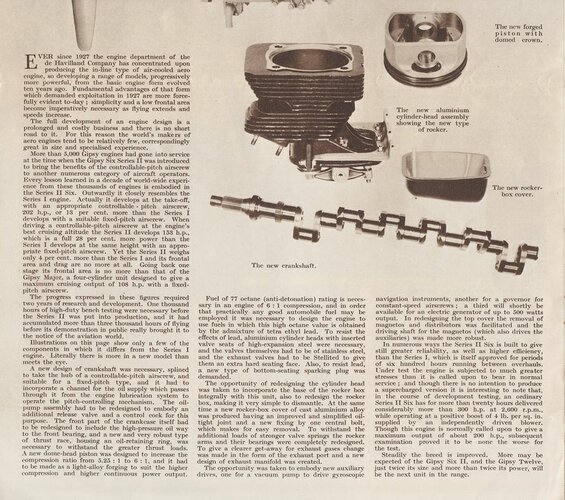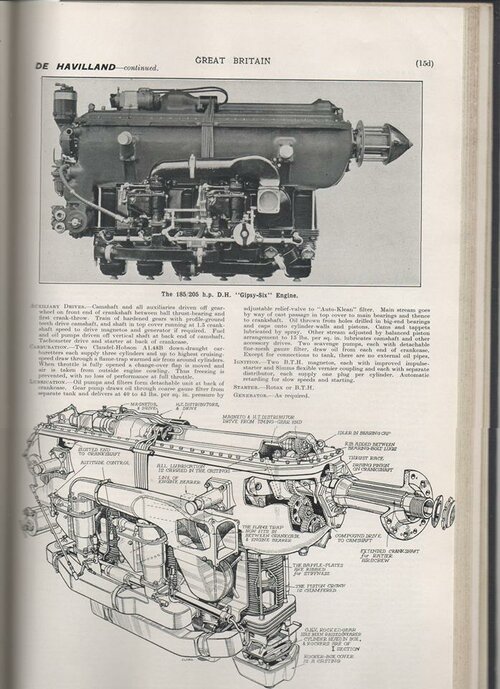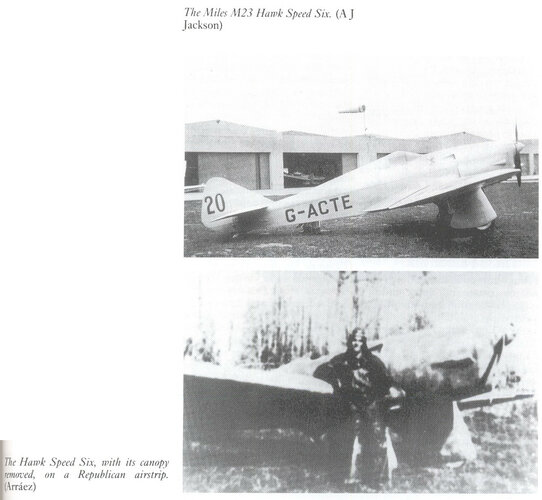to get from 70.1 Lbs/31.8kg (As per the the DH manual.) - to 119.05 Lbs/54kg is quite a leap - a 48 Lbs/22.20 kg leap
Yes. This was precisely why DH were so worried about the risks of the heavy American props that they instituted a backup plan. That backup was the one which found its way onto the operational planes and hence also into the manual. The saga is well documented by many commentators, both contemporary and subsequent.
Do you have the DH data on the splines on the R crankshaft - because that would be a very interesting nugget - no matter which splines were used. It'll be interesting to see if another genuine R has turned-up - if it has the same crankshaft splines as the one at OW. Perfectly useless information - but interesting nonetheless - even if it is off-topic.
That documentation has been lost, as far as we know. What we do have is statements that it was made to fit the over-designed Hamiltons, and an example at Shuttleworth which may still retain them under its adapter sleeve. Whether G-ADOD's engine survives, and whether it was cut down for the bracket flange, are the only aspects which
are in fact relevant to the present topic.
On that last, it occurs to me that the Ratier and Fairey-Reed flanges may even have been compatible, meaning that a Ratier adapter could still have been used. I should have thought of that before.
The PD30 wasn't a 'back-up' - it was the basic HS design - shrunk to fit DH's/UK's smaller civil engines - the whole purpose of the agreement with HS from the outset. DH's would have been well aware of the increased mass of any VP design - why would this be a 'risk'..?
As for HS's airscrews being 'over-designed' - well, HS's airscrews were all designed for larger more powerful engines, and - far more importantly, they were designed for radial engines..... The initial blades fitted to the Comet were that same US pattern - and the bladeform didn't extend to the root. The DH bods referred to these as 'Broomstick' blades. This proved to be a big issue. They were less efficient - and the lack of bladeform towards the centre also affected the Gipsy engines cooling. Overall - they didn't offer the efficiency required to give the Comet the required range for the 1934 race. Look at images of the blades as tested - and a PD30, and you'll see how the bladeform on the latter runs close to the spinner.
If you think that DH's used a standard HS assembly - 'off the shelf' to fit to the 'R'- what is the ID for that assembly...as it will still be listed.....? I don't think HS ever made a Bracket-Type VP assembly that small - so good luck with that.
So what
do I think happened....? I think that the prototype assemblies made for the Comets were to the HS design - and DH's specs - including the spider. Given the very short time available - they may have been made - at least in part in the US. I think the blades carried HS transfers - so it's a fair bet the blades at least were made in the US. One can imagine them asking HS to make some blades for XYZ RPM/Power?Diameter.
(There is a good reason for this;- The blade blanks are forged. The outer shell for the hub's roller-bearings has to be fited onto the blade, outboard of the hub-flange, before the blade is fully-forged.). Had the blades been made in the UK - it's hard to imagine DH's not picking-up on the bladeform issue if they were made locally - a cock-up no doubt resulting from the speed of events.
The Ratier was designed from the outset for engines
not equipped for VP operation (ie;- Most small civil engines at that time.) - hence the flanged design - that was the whole point of using the flange. That model -
in both variants - was crude - in both fitting and operation. However - it did have the advantage of having an inherently more efficient bladeform - and that was the only reason that DH very reluctantly used them.
As a matter of interest, evidence suggests that given everything else being equal - the PD30's bladeform was never as effective as that used by Ratiers. In all other aspects, the HS design was vastly superior.
DH's fixed pitch engines such as the
Six I used a short tapered crankshaft end. Onto this taper, pretty-much any design of fixed-pitch prop hub could be fitted for the many FP airscrew makers. Thus the extended 'adapter' used by the 'R' engines (To clear the splined shafts of the 'R's.) would have been totally unnecessary and the Ratier would have thus sat in the same position as a FP airscrew, therefore, in practice, that extension/adapter would not have been used. "Could have been used' - yes. 'Would have been used' - no, - it would have been pointless.
The whole DH/Ratier preference issue was in evidence in UK domestic and long-distance air-racing/record-setting in 1936 - 1939, and the same basic adapters used on the Comets were also used when Ratiers of that generation were often fitted to Six II's - and for the same reasons.

